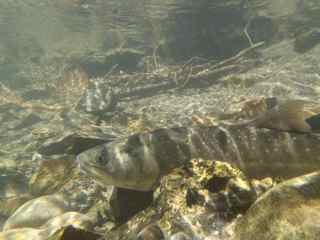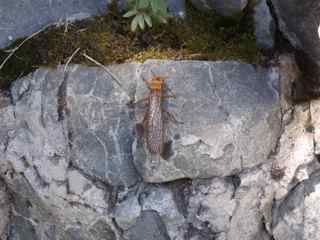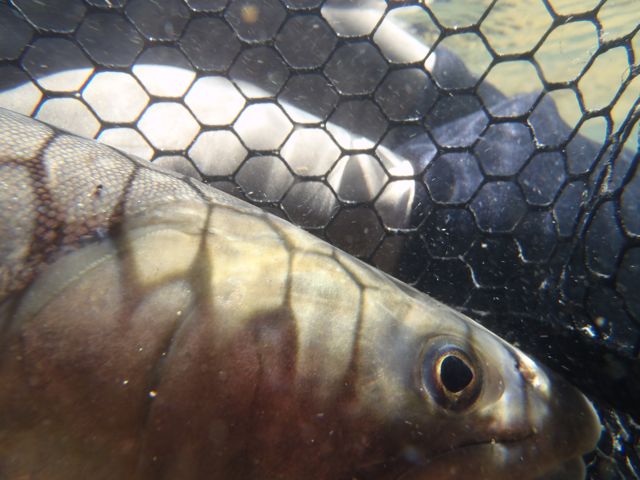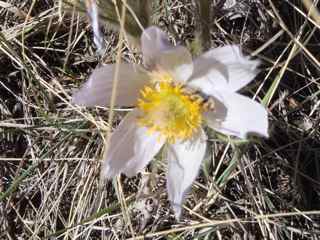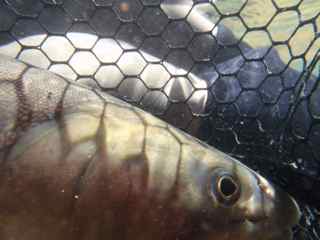-
Posts
31 -
Joined
-
Last visited
Content Type
Profiles
Forums
Events
Store
Everything posted by robertboyce
-
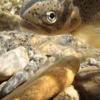
South Saskatchewan Regional Plan Needs Our Input
robertboyce replied to robertboyce's topic in General Chat - Fishing Related
This is the last day to submit input to this phase of the landuse plan that covers the eastern slopes from more or less Calgary south. Looks like the online workbook is still open to comments until the end of today. -

South Saskatchewan Regional Plan Needs Our Input
robertboyce replied to robertboyce's topic in General Chat - Fishing Related
Thanks for taking the time to work on the workbook and trying to submit it. Did this location finally get it sorted out or were you able to submit it some other way? So far I’ve had a better experience with the system so this is a little disappointing. -

South Saskatchewan Regional Plan Needs Our Input
robertboyce replied to robertboyce's topic in General Chat - Fishing Related
Hi ÜberFly. I've a different understanding of how the SSRP and its process could affect OHV use and the other items currently under discussion. I don’t believe that I am able to say that any particular user group will see changes just yet. I’ll explain my reason for saying this. I’m hypothesizing that you have read either the Regional Advisory Council (RAC) Advise-to-Government document or the workbook because both contain discussions on OHV use. The workbook is more or less based on the RAC advice. The government has said that the RAC advice is not government’s perspective and not the Regional Plan. It’s the RAC advice only. The provincial government intends to take the RAC advice and all the information received during this Phase II consultation all together to prepare the draft Regional Plan. This feedback includes workbooks, position papers, other documents, letters, public session feedback, stakeholder session feedback, etc. Many groups are taking this phase of consultation quite seriously and are maximizing their influence by organizing and attending consultation sessions and through direct submissions to government (like the workbooks). If this collective feedback is significantly different from the RAC advice the content of the draft Regional Plan could look quite different compared with the material currently in circulation. For this reason I believe that if we like something in the workbook we need to show it and if we dislike something we need to state that as well. Once the draft Regional Plan is built another round of consultations will occur. After feedback from those consultations is considered the Plan will be finalized and sent to cabinet for approval. After that the Plan becomes law. -

South Saskatchewan Regional Plan Needs Our Input
robertboyce replied to robertboyce's topic in General Chat - Fishing Related
Here is an article from today's Calgary Herald (thanks bcube). It is about the Hidden Creek timber harvest situation. It describes why some feel logging this area is unacceptable and presents the government and industry responses. At the end of the article there is a statement "he <Duncan MacDonnell, ESRD Public Affairs Officer> noted that the ongoing review of the South Saskatchewan Regional Plan, which will set out land-use policies for the area south of Calgary, could potentially lead to future changes.” I feel like I have a fantastic opportunity to be heard through the regional planning process and I'm hoping to sway some more folks to feel the same way. Pls don’t let it go by without sharing your thoughts. All of us together are more intelligent than any one of us. The article: http://www.calgaryhe...1745/story.html -

South Saskatchewan Regional Plan Needs Our Input
robertboyce replied to robertboyce's topic in General Chat - Fishing Related
For convenience here is the nearest link I could find for the printable/downloadable copy of the workbook: https://www.landuse.alberta.ca/Newsroom/Pages/PublicConsultations.aspx The actual link to the work book is just above the image with the haybales part way down the page. Sorry, the file was too large to attach to to a post. If a person chooses to submit a hard copy they can do so here: SSRP Phase 2 Workbook Land Use Secretariat 9th Floor, 10035 – 108 Street Edmonton, Alberta T5J 3E2 The workbook may also be submitted at any local Government of Alberta office. -

South Saskatchewan Regional Plan Needs Our Input
robertboyce replied to robertboyce's topic in General Chat - Fishing Related
For people’s convenience here is the direct link to the online version of the workbook: http://www.banister.ab.ca/SSRPworkbookphase2/ -
We have a fantastic opprotunity to directly address some of the long standing backcountry use and conservation issues through the provincial governments South Saskatchewan Regional Planning process. This is a Land use Plan. The government is craving input and has created a formal and what I think is an excellent process to receive it. Primarily through what's called the Phase II consultation workbook and the Phase II Consultation Sessions occuring around southern Alberta. I've been lucky enough to attend a few of their stakeholder sessions along the east slopes and can say that i don't recall seeing anybody from the angling community. Not a guide, not an ENGO, not an angler. Not to say they were not there or not at another event but this user group was certainly not conspicuous. Several other ENGOs, municipalities, industry, landowners, land trusts, etc. were all present and ensuring that their messages were heard. The OHV folks were present as well. The few I spoke with were very well prepared and I suspect represent the more responsible folks. All their voices have been heard. I worry that input from the the people in this community have not. Please take the time to submit one of these workbooks. They can be online or hard copy. Numbers matter! The more voices sharing your values the more likely things will change. You do not need to complete the entire book….the government has stated that it will happily accept information in partially completed workbooks. Complete the portions where you have an opinion. The deadline is December 21, 2012. This information can be found here: https://www.landuse....es/default.aspx
-
Thanks Hawgstoppah. At the risk of ostracizing myself I do feel that this forum can be heavy on words and light on action sometimes. My apologies in advance to those that are more active. Here are some activities that I am aware of that we could do to become more involved (in addition to moaning ): South Saskatchewan Regional Plan Phase II Workbook. For the love of all backcountry management please take the time to submit one of these workbooks. They can be online or hard copy. Numbers matter! The more voices sharing your values the more likely things will change. You do not need to complete the entire book….the government has stated that it will happily accept information in partially completed workbooks. Complete the portions where you have an opinion. The deadline is December 21, 2012. This information can be found here: https://www.landuse....es/default.aspx Actively write your MLA and senior people in Environment and Sustainable Resources Development when you become aware of an issue, include photos and data if possible (e.g. Hidden Creek in the upper Oldman was just reopened for clear cut timber harvest which is occurring right now as I understand it.....I've read that in some years +/- 78% of adult migratory bull trout in the upper Oldman system spawn here. I hope there's a proper plan in place for this harvest. See here for a little more information on this creek and the overall drainage: http://www.ab-conser...ldman-drainage/) Become active in a conservation group that shares common values (F&G Associations, TUC, AWA, ACA, etc.) Learn more about/participate in the Stewardship License Pilot Project under ESRD Fisheries and TUC (harvesting brookies to make space for native species) Learn more about/participate in the Upper Oldman River bull trout tagging project under ESRD Fisheries – volunteers are needed Support existing programs that have had success in specific sectors (e.g. Cows and Fish) Work to educate your peers (e.g. if you’re an OHV user promote the tires-on-trails philosophy) I have some direct in a few of these (1,3,4,5) and would be happy to chat with folks and share the bit that I've seen.
-
Some thoughts. Earlier this year I received my stewardship license and was intrigued by a note indicating that barbed hooks do not significantly increase hooking mortality. I had a hard time believing this and ended up corresponding with a number of fisheries folks all over the place reading a number of studies and all this changed my view of the situation. I agree with Dave and Rick in that, based on the work I have seen, there is no significant difference in mortality between barbed and barbless hooks. Interestingly enough there is more than one peer reviewed study showing that hook configuration vs. hooking mortality is a highly variable situation. In more than one study, in both marine and freshwater systems, a barbless single hook was found to produce a higher level of hooking mortality than a barbed treble hook. I know it sounds odd. I didn’t start using treble hooks but this did make me think that there was more than I understood happening here and maybe I wasn't quite as clever as I thought I was. I also agree with shredneck et al in that there is likely a difference between hooking mortality and injury and that there may be reasons other than mortality to use a barbless hook. There are fish swimming around that have lost their maxilla and have scars but they are still alive and healthy. This is exactly why using a barbless hook is not illegal in Alberta. I feel like this notion of barbless being illegal sounds odd but in some countries catch-and-release is illegal and if you’re caught releasing a fish you’ll be fined and shamed by your peers. BTW I would choose the barbless hook if you were sticking one in my hand. There are other factors that consistently come up as causing increases in hooking mortality. I recall water temperature and duration needed to land the fish being the two consistent factors especially when they work together. A long fight in warm water is big trouble for a trout. If this is correct than a coveted 20” fish landed on 5/6x is likely at a higher risk of dying than the one cranked in with a spinning rod and a barbed treble hook. I appreciate that studies are not perfect and that they need to be read with care. The world is filled with people studying everything and announcing their results as fact and that a study may not reflect what’s happening on the ground. I ended up feeling that enough work had been done by enough people in enough places that barbed vs. barbless was just not a significant factor in a fishes likelihood of dying after being caught through angling. If I choose to use barbless it had to be for a reason other than mortality and that forcing people to go barbless may not be a useful tool. In the end I ended up feeling a bit bad about pushing barbless single hooks in the past. I really didn't know as much as I thought I did. I've ended up appreciating the fact that the spin caster using a barbed panter martin or spoon may well be causing no more risk to the fishes lives and me and a fly and in fact occasionally using light lines with big fish likely made me the culprit in the death of more than one trout. I’m fine with dropping the barbless regulation so long as I can still use barbless when I choose to do so. I feel that there are likely other areas that would give us more conservation benefit like education and habitat preservation for example. I would love to see education required before obtaining an angling license in Alberta, especially for the east slopes.
-
This may seem like a ridiculous comment but I had a couple days that seemed to match this last fall and had success being a complete contrarian. We carefully fished a number of pools one particular day without success despite seeing many actively feeding cutts. Half joke/half desperation I tied on an enormous red bellied foam hopper that seemed to have absolutely no business being on the water this day and surprisingly enough if I cast it lightly into a spot with at least some character on the waters surface so it didn't splat it consistently produced fish. Not saying it's the way to go but it worked on this occasion (if anyone knows why this worked I'm all ears....).
-

Upper Oldman River Drainage Bull Trout Tagging
robertboyce replied to robertboyce's topic in General Chat - Fishing Related
Hi HeliTroutSlayer, Give this guy a call. Tell'em I sent you if you like. Kenton Neufeld Fisheries Biologist, Southern Rockies Area Fisheries Management Alberta Environment and Sustainable Resource Development Kenton.Neufeld@gov.ab.ca (403) 563-7013 Line up a date with him and away you go. Good luck, Robert -
I've been using a furled leader with a tenkara rod and dries found it a lot of fun. Vy nice to cast and vy effective for fly control with this type of set up.
-
Tkx for the thoughts. I'm comfortable removing flies but once in a while a fish squirms at the right moment while I'm holding the fly to remove it and I wreck the fly/mess up the hackle, etc. Perhaps I'm off on my technique. Any thoughts on this? This was the reason I originally tried this tool....seems to protect the fly in the tube during removal....but like many folks I've been able to remove the hooks without it so it stays at home in a drawer.
-

Good Waterproof Camera For Fishing?
robertboyce replied to cohoconnie's topic in General Chat - Fishing Related
-

Good Waterproof Camera For Fishing?
robertboyce replied to cohoconnie's topic in General Chat - Fishing Related
My wife picked up an Olympus Tough Guy (TG) for me with some reward points. I think mine is the entry 310 model. It works okay out of the water but seems to work really well under the water. I've not abused it too badly but I've submerged it several times, dropped once from a little higher than I would have liked and it still seems to work fine. The battery has served me well. Connects to the macbook without issues, etc. I'll see if I can shrink a couple pics down and post them. -
Thanks Doug. Lots of helpful info. I've a friend that likes the Tenkara level lines followed by a 4x-6x fluorocarbon tippet. I'm not sure what the level lines are made of (mono, fluro, etc) but some folks seem to really like these vs. the traditional furled leaders.
-
Hey all, Thought I'd resurrect this topic and get peoples thoughts. I've a couple of these but rarely use them. I've found 95-98ish/100 fish can be released by hand and the hemostats take care of the rest. Like many have said it's just one more thing to carry. That said, I noticed in my log book that I fished nearly an entire season with the tool a few years ago and went without hardly touching a fish and I wrecked fewer flies removing them. The tool does a nice job cradling the fly while it's removed. Anybody use these day in/day out while they're on the water? Robert
-
Hi Don..there may have been one in Canmore. Sometime in the mid 90's the Sam Livingston Fish Hatchery Volunteer Society would attend various outdoor oriented events and setup a booth with fish on display for education. There was an event in Canmore where the local biologist at the time (Brian L.?) electrofished one of the local creeks (Policeman's) for a few specimens for the display. I think one of the fish he captured was a Tiger. I seem to recall a lot of buzz about this because they're so uncommon.
-
Hi Adams. Great idea posting this....I think that the more eyes there are in the backcountry the better. I'll pass along these comments to ESRD Fisheries in Blairmore. If anyone is actually conducting Bull Trout work in the area it is for either Kenton or Matthew the fisheries biologists that work there. I know that there is one member of the public that has been issued a Fish Research License (FRL) to assist in a mark/recapture study on Bull Trout in the Upper Oldman Drainage but I don't know this person. I would be surprised if ESRD issued an FRL to someone that came across this unprepared (possibly unprofessional). BTW this mark/recapture study is the same one I created a topic on a week or so ago. If we run across anyone saying that they are doing anything with/for the Government of Alberta we can ask them for their FRL and the if they can not produce one we can ask for the name of the biologist that they are working with and what program they are volunteering for. If I ask these Q's and they can't respond I'll pass the details along to the local biologist and the local enforcement folks. I've a couple FRLs that I work with as a volunteer and every time that I've been issued one I've been given strict instructions by the biologist to produce it upon request by any enforcement person or concerned member of the public.
-
Hey Toirtis, Just noticed your post. Have you been using the Tenkara gear this season? I've a friend with the rod, furled leader and a few flies that he's willing to loan me.....just wondering how tricky it is to get started. Robert
-
Hi Bowflyman. I've fished Fish Creek in the McLean Ck OHV area for 3ish decades. As a boy the main fish I remember catching were cutthroats (and some nice sized ones) followed by the odd rainbow. The old timers tell me that they caught the occasional brown as well but I don't recall ever seeing one. As time went on rainbows were more and more of the catch with some fish that looks like crosses appearing. I didn't know what they were at the time but as a kid I remember wondering why the rainbows had a slash and feeling sheepish that I couldn't tell the cutts from the rainbows at times. Then one day I recall catching a brookie and thinking that it was nice to have another species to fish for in the stream....this was long before education and experience helped me understand that brookies (and rainbows for that matter) are a wonderful fish but that a misplaced brookie is not a good thing for my beloved WCTs. Eventually upper Fish Creek went from being a nice cutt stream to a nice small-brookie stream with the odd little cutt x rainbow/rainbow thrown in. I've not caught a proper looking WCT in this stream for a very long time. Just guessing but the last real cutt looking fish I caught was likely in the early to mid 1990's...a bit sad in a way.
-

Harvest An Unlimited Number Of Brookies, Legally
robertboyce replied to jstelfox's topic in General Chat - Fishing Related
ROFL....takes me 30-40 to walk to 532 from the place where the culvert crosses the main trail.....takes him 20....all these long time biologists move like antelope through the bush. Thanks for the notes on the Minnow. I think Harps and I are going to check this creek out next week. Harps you up for a walk? -

Help Wanted! A Mountain Whitefish Spawning Survey
robertboyce replied to dryfly's topic in General Chat - Fishing Related
Thanks for posting this Clive. -

Upper Oldman River Drainage Bull Trout Tagging
robertboyce replied to robertboyce's topic in General Chat - Fishing Related
I should mention that a person would not need to sign up for the whole program to help out. If you give Kenton a call you could fish with him for a day which doubles his chances of finding a tagged Bull Trout. If you're interested in learning more about fish this is a cool way of doing it because you essentially trade your angling skills for a day for the opportunity to fish with one of the provincial biologists. -

Are Bow River Trout Leader Shy?
robertboyce replied to cgyguy's topic in General Chat - Fishing Related
I like many of the previous comments....presentation seems to matter more than the tippet/leader size. I think that the main reason to go to a longer or finer tippet is good presentation. I found a book once that showed how to build a leader then "tune-it" to the particular situation and found this really helpful. It took me away from leader construction details like length and diameter and moved me more towards having a base leader and adjusting it in a systematic way 'till it casts the way I want. I ran across some material by George Harvey and another piece by Charles Brooks earlier this season where both guys seemed to feel that trout were not leader shy per se (or at all) but they definitely are drag shy. I'm not saying their correct but I found it interesting how plainly they stated this point.




